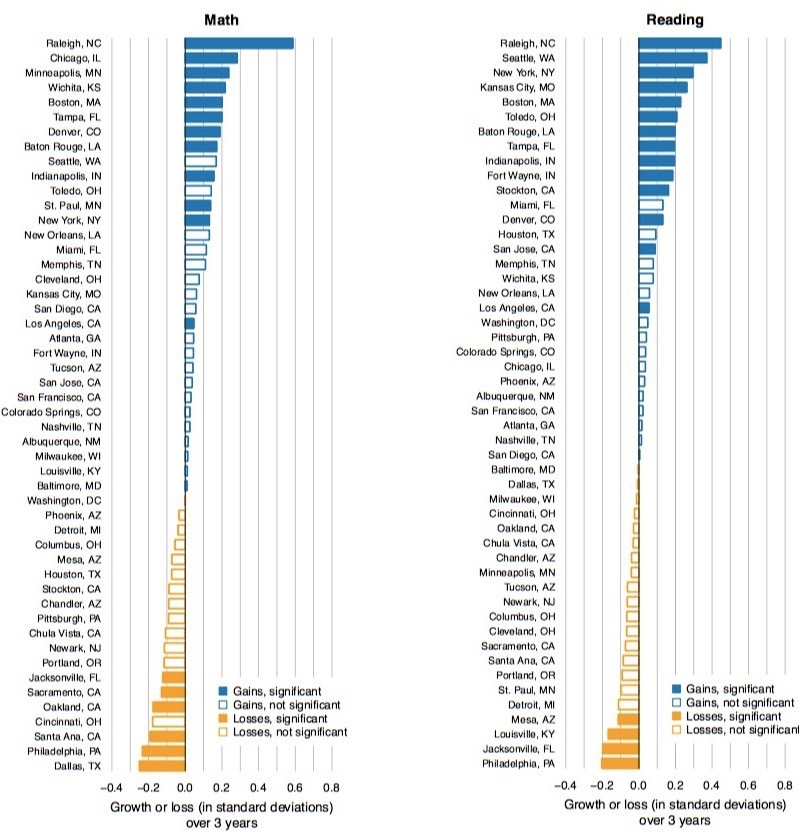A Discouraging Portrait of America's Urban Public Schools
The report card for public and charter schools in 50 U.S. cities shows room for improvement.
Researchers have examined the inequities between city schools districts and also evaluated the performance of urban charter schools. What they haven’t been able to do is a take a comprehensive city-by-city look at public and charter schools together—until now.
“If you're a city leader—a mayor or some other community leader—it's hard to gauge the overall health of the city schools. That can make it hard to frame where the city's doing well, and where it needs to do better,” says Michael DeArmond, senior analyst at the University of Washington’s Center on Reinventing Public Education, and lead author of CRPE’s new study that seeks to plug this hole in education data.
In the report, DeArmond and his colleagues analyzed recent federal and state data on public and charter schools in the 50 cities with the highest school enrollment. Their measures included test scores, graduation rates, and even suspension rates for students by race. The resulting portrait of the city public school system in the U.S. is “discouraging,” DeArmond says.
CPRE summarizes the findings on its site:
Our analysis shows some brights spots, but performance in most cities is flat. Poor and minority students face staggering inequities, and the picture is especially bleak for black students.
Most city public schools aren’t improving
Across all 50 cities, the average graduation rate was around 75 percent. This varied widely from one city to another. While Toledo, Ohio, saw just slightly over half of their public school students graduate, Fort Wayne, Indiana, reached a 90 percent graduation rate.
In terms of testing, less than a third of the cities analyzed in the report improved their math and reading scores relative to the state average. Only 12 cities saw gains in math scores (below, left) while 14 saw improvements in reading (below, right):A New Report Gives a Discouraging Portrait of America's Urban Public School System - CityLab:


